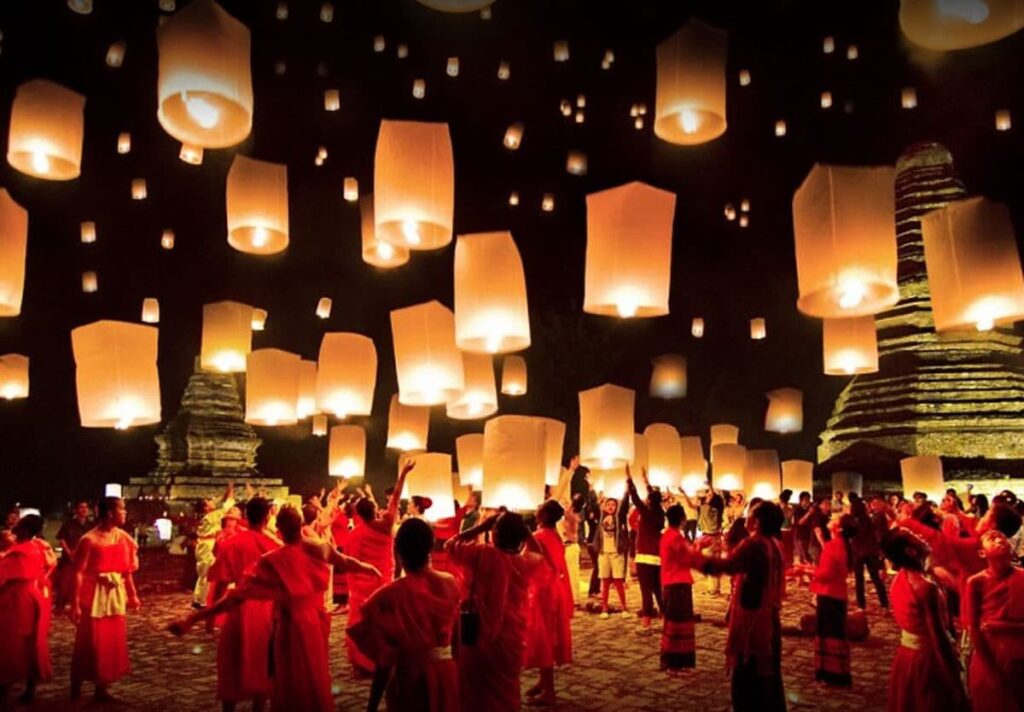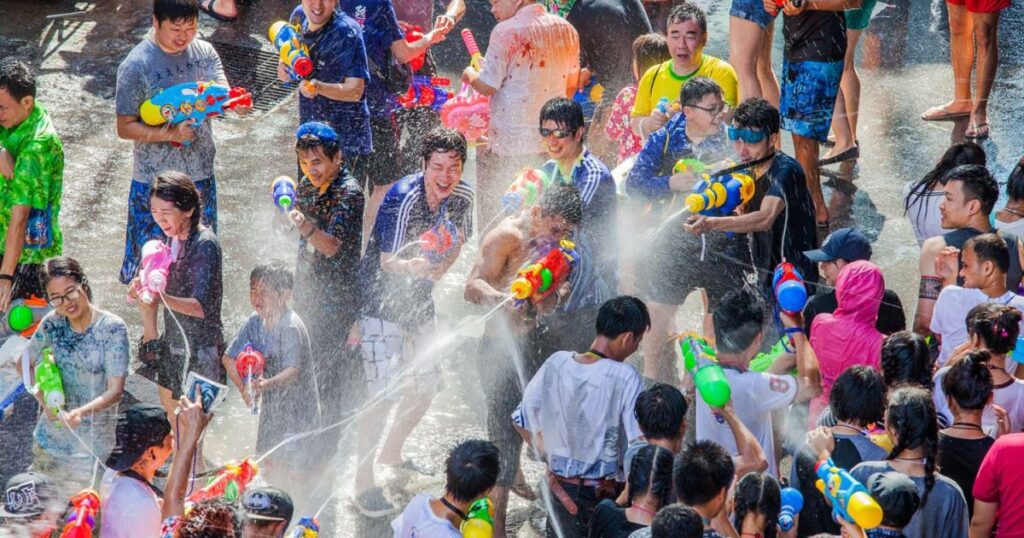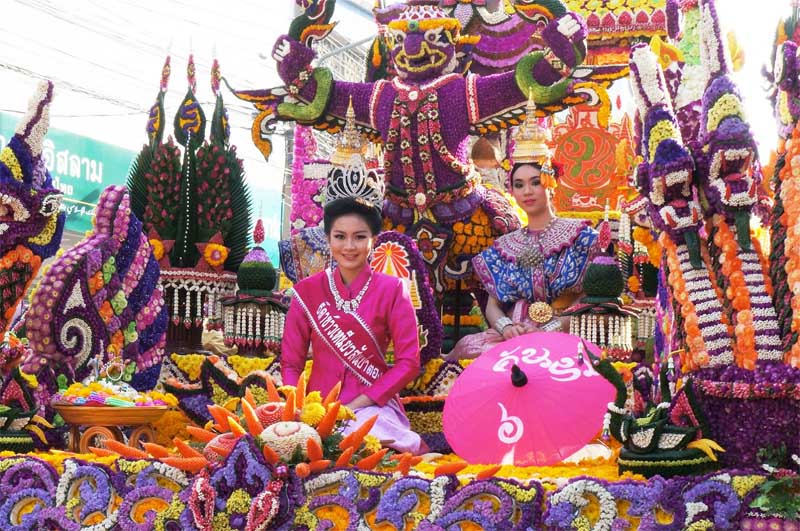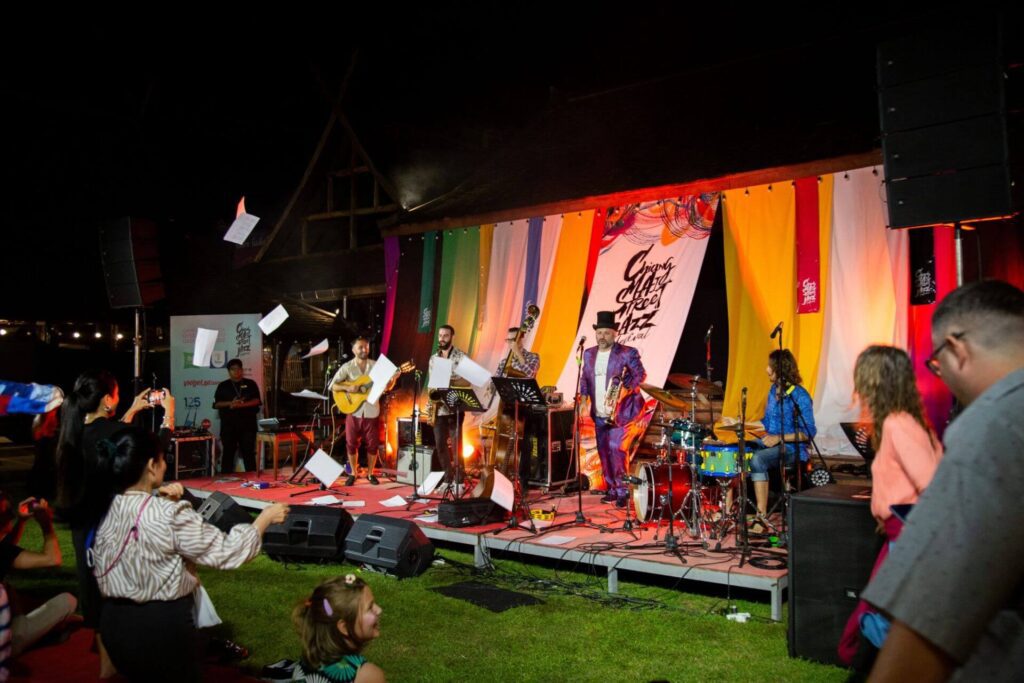The Rich Tapestry of Festivals in Thai Culture and Chiang Mai’s Central Role
Nestled in the heart of Northern Thailand, Chiang Mai is not just a picturesque city known for its historic temples and vibrant street markets; it’s also the epicenter of Thailand’s rich cultural and festival calendar. Thai culture is deeply intertwined with its festivals, each of which carries a unique blend of historical significance, spiritual importance, and communal celebration. These festivals are not just annual events; they are living, breathing moments of Thai life that offer a window into the soul of the country.
Chiang Mai, with its unique Lanna heritage, stands out as a cultural hub where these traditions shine brightest. Here, the traditional blends seamlessly with the contemporary, making it an ideal place to experience the full spectrum of Thailand’s rich cultural tapestry. The city’s streets and ancient temples become the stage for a variety of festivals throughout the year, each marked by its distinct character and charm.
Planning Your Visit Around Chiang Mai’s Festivals
For those looking to immerse themselves in this cultural richness, timing your visit to coincide with one of Chiang Mai’s many festivals can be an enriching experience. From the famous Lantern Festival, known locally as Yi Peng, where thousands of lanterns light up the night sky, to the Songkran Water Festival, a lively celebration marking the Thai New Year, each event offers a unique glimpse into Thai traditions and celebrations.
When planning your trip, consider the festival dates, which often follow the lunar calendar and can vary each year. Accommodations in Chiang Mai can get booked quickly during these peak periods, so it’s wise to plan well in advance. Also, each festival has its customs and traditions; understanding and respecting these can greatly enhance your experience. For example, during Loy Krathong, you can participate in the serene activity of releasing a krathong (a small float made of banana leaves) on a water body, a symbol of letting go of negativity and misfortune.


Yi Peng and Loy Krathong – Festivals of Light
In Chiang Mai, the festivals of Yi Peng and Loy Krathong stand as breathtaking spectacles of light and tradition, merging history, culture, and celebration into unforgettable experiences. These festivals, deeply rooted in Thai culture, offer both locals and visitors an opportunity to participate in a rich, communal tapestry of traditions.
Historical and Cultural Background of Yi Peng and Loy Krathong
Yi Peng and Loy Krathong, while often celebrated together, have distinct historical and cultural origins. Yi Peng, the festival of lanterns, is a Lanna tradition, originating from the ancient northern Thai kingdom. During Yi Peng, thousands of paper lanterns, or ‘khom loi’, are released into the night sky, creating a mesmerizing sea of light. This act symbolizes the letting go of misfortunes and bad luck, with the lanterns carrying away troubles to bring about good fortune and blessings.
Loy Krathong, on the other hand, is a water festival celebrated across Thailand. Participants float ‘krathongs’ – beautifully decorated baskets usually made from banana leaves and flowers – on rivers and water bodies. This ritual is believed to pay homage to the water spirits, thanking them for their bounty and apologizing for polluting the waterways. Loy Krathong is also a time to let go of grudges, anger, and impurities, symbolized by the drifting away of the krathong.
Best Spots in Chiang Mai to Participate in Lantern Releases and Riverside Ceremonies
Chiang Mai, with its rich Lanna heritage, is one of the best places to experience these festivals. The Mae Jo University lantern release is one of the most famous events for Yi Peng, where thousands gather to release lanterns simultaneously, creating a breathtaking spectacle. For a more traditional and less crowded experience, the Three Kings Monument and Nawarat Bridge areas are excellent spots to join locals in lantern releasing.
Loy Krathong’s charm can be best experienced along the banks of the Ping River or at the city’s numerous temples, where krathong making and releasing, along with beauty pageants, parades, and cultural performances, take place. The Iron Bridge and Narawat Bridge offer spectacular views of the krathongs floating on the river.
Safety Tips and Etiquette for Participating in These Festivals
Participating in Yi Peng and Loy Krathong is a privilege, and it’s important to do so responsibly and respectfully:
Fire Safety: Be cautious when lighting and releasing lanterns. Ensure they are fully airborne before letting go and be mindful of your surroundings to avoid fire hazards.
Environmental Considerations: Use eco-friendly lanterns and krathongs. Avoid using materials like styrofoam and plastic that harm the environment.
Cultural Sensitivity: These festivals are significant cultural events. Dress appropriately, especially when participating in ceremonies at temples, and show respect for local customs and traditions.
Crowd Management: These events can draw large crowds. Be patient, follow local guidance for crowd management, and be prepared for potential traffic and transportation delays.
By understanding the historical and cultural significance of Yi Peng and Loy Krathong, choosing the right spots to participate, and adhering to safety and etiquette guidelines, you can fully immerse yourself in these mesmerizing festivals of light in Chiang Mai, creating memories that will last a lifetime.


Songkran – The Thai New Year Celebration
Songkran, the Thai New Year, is an event steeped in rich tradition and celebratory fervor, particularly vibrant in Chiang Mai. This festival, extending beyond mere celebration, embodies deep cultural and historical significance in Thailand.
The History and Meaning Behind Songkran, the Thai New Year
Originally rooted in the Buddhist calendar and marking the end of the dry season, Songkran has evolved into Thailand’s most famous and widely celebrated festival. Traditionally, it is a time for cleansing and renewal, symbolized by the pouring of water. This act was initially a gentle ritual of pouring water over Buddha statues for purification and over the hands of elders as a mark of respect and blessing. Over time, this ritual transformed into the lively, country-wide water festival that Songkran is known for today. The water symbolizes the washing away of misfortunes and bad luck, ushering in a fresh start for the New Year.
Experiencing the Water Festival: Key Locations and Activities in Chiang Mai
Chiang Mai, with its rich cultural tapestry, offers an immersive Songkran experience. The city’s historical Old City area becomes the epicenter of celebrations, with streets closed off to traffic and transformed into lively arenas for water fights. The moat surrounding the Old City serves as a major source of water for revelers.
Key activities include the traditional Buddha statue procession, where statues are paraded through the streets for people to pour water over as a sign of respect. Another highlight is visiting local temples to offer food to monks, an act that embodies the spiritual aspect of the festival.
Tha Pae Gate is one of the main gathering points, buzzing with live music, traditional dances, and street vendors. Here, you can fully engage in the celebratory aspect of Songkran, equipped with water guns, buckets, and a playful spirit.
Cultural Dos and Don’ts During Songkran
While Songkran is a time of joy and fun, it’s important to observe certain cultural norms:
Dress Appropriately: Opt for modest, light, and quick-drying clothing. Be mindful of Thai cultural norms regarding dress, even amidst the festivities.
Respectful Water-Throwing: While splashing water is all in good fun, always do so respectfully. Avoid throwing water at monks, elderly people, and those who clearly do not wish to participate.
Protect Your Belongings: Water is everywhere during Songkran, so waterproof protection for phones, cameras, and wallets is essential.
Safety First: The festival can get quite rowdy, so it’s crucial to be aware of your surroundings, especially in crowded areas. If driving, be extra cautious as the roads can be slippery.
Embrace the Tradition: Beyond the water fights, take the time to engage with the traditional aspects of Songkran, such as temple visits and rituals, to appreciate the festival’s deeper cultural significance.
Songkran in Chiang Mai offers a unique blend of spirited festivity and rich cultural tradition, providing an unforgettable experience for those seeking to start the Thai New Year with enthusiasm and a splash of fun.


Flower Festival – Blooms and Beauty
The Chiang Mai Flower Festival, a celebration of blooms and beauty, is a spectacular event that transforms the city into a vibrant canvas of colors and fragrances. This annual festival, usually held in February, showcases the region’s rich horticultural tradition and the stunning diversity of its local flora.
Exploring the Chiang Mai Flower Festival: Parades, Flower Displays, and Contests
The heart of the festival is the grand parade, a dazzling procession of floats adorned with a multitude of flowers in intricate designs, reflecting both traditional Thai art and contemporary styles. These floats, accompanied by dancers and musicians in traditional Thai costumes, create a mesmerizing spectacle that weaves through the city streets.
Beyond the parade, the festival features a variety of flower displays and contests. The Suan Buak Haad Park becomes a central exhibition area, where visitors can marvel at the skillful arrangements of local and exotic flowers. The park buzzes with horticultural competitions, showcasing the best of orchids, roses, and other blooms, often highlighting rare and unusual varieties.
The Best Parks and Areas to Enjoy the Floral Displays
While Suan Buak Haad Park is a focal point of the festival, the beauty of the event spreads throughout the city. Several other parks and public spaces join in, creating a city-wide celebration of flowers. The areas around the moat and Tha Pae Gate often feature stunning floral installations, making them great spots for enjoying the displays and taking photographs.
The Chiang Mai University area and the Royal Park Rajapruek also participate in the festivities, with elaborate flower arrangements and landscaped gardens. These areas offer a more tranquil setting, allowing for a leisurely appreciation of the floral artistry.
Insight into the Local Flora and the Festival’s Significance
The Chiang Mai Flower Festival is not just a display of horticultural expertise; it’s a celebration of Northern Thailand’s rich biodiversity. The festival highlights local species like the Damask Rose, unique to the Chiang Mai valley, and a variety of orchids and lilies. This event also signifies the importance of flora in Thai culture, symbolizing beauty, spiritual purity, and the cycle of life.
The festival, moreover, is a nod to Chiang Mai’s historical significance as a cultural and ecological hub in Northern Thailand. It offers visitors and locals alike a chance to bond over shared admiration for nature’s beauty, underscoring the city’s ongoing commitment to environmental conservation and sustainable tourism.
In essence, the Chiang Mai Flower Festival is a vivid reminder of the city’s deep connection to nature and culture, offering a feast for the eyes and a tranquil retreat for the soul amidst the vibrant hues of its floral heritage.


Other Notable Festivals and Cultural Events
Chiang Mai, a city rich in cultural heritage, offers a vibrant tapestry of festivals and events beyond its famed Flower Festival and Songkran. These occasions provide insights into the city’s traditions and contemporary artistic expressions, making them worth exploring for anyone seeking to immerse themselves in local culture.
Other Notable Festivals and Cultural Events in Chiang Mai
Chiang Mai Arts and Culture Festival: Usually taking place in April, this festival coincides with Thai Heritage Conservation Day. It’s a celebration of Northern Thai culture, featuring traditional Lanna dance performances, art exhibitions, and handicraft workshops. The city’s streets and ancient temples serve as backdrops for cultural parades and live music performances, showcasing local talent.
Chiang Mai Lantern Festival (Yi Peng): Separate from Loy Krathong, Yi Peng is a Lanna tradition where thousands of lanterns illuminate the night sky, creating a surreal and beautiful spectacle. It’s a symbol of letting go of ills and misfortunes, celebrated around November.
Chiang Mai Jazz Festival: For music enthusiasts, this festival is a must-attend event. It brings together renowned jazz artists from around the world, offering a weekend of soulful melodies and vibrant rhythms.
Monthly and Seasonal Events Worth Experiencing
Chiang Mai’s cultural calendar is dotted with monthly and seasonal events that cater to a wide range of interests:
Sunday Walking Street Market: Every Sunday, the city’s main street transforms into a bustling market where you can experience local food, crafts, and impromptu street performances.
Chiang Mai Documentary Arts Festival: This annual event, usually held in February, showcases documentary films and photography from Southeast Asia, fostering a dialogue on social issues and artistic expression.
Bo Sang Umbrella Festival: Held in January in the Bo Sang village near Chiang Mai, this festival celebrates the art of traditional Thai umbrella making, with the streets lined with colorful umbrellas and lanterns.
How to Find Information About Upcoming Festivals and Events During Your Stay
To keep updated on the latest events and festivals during your stay in Chiang Mai:
Tourist Information Centers: Visit local tourist information centers for brochures and schedules of upcoming events.
Online Resources: Websites like the Tourism Authority of Thailand (TAT) and local expat forums provide updated information on cultural happenings in Chiang Mai.
Social Media: Follow social media pages and groups dedicated to Chiang Mai events. They often post updates and insider tips about upcoming festivals.
Local Newspapers and Magazines: English-language newspapers and magazines available in cafes and bookstores can be great sources for event listings and cultural insights.
Each festival and event in Chiang Mai offers a unique window into the city’s rich cultural landscape, inviting visitors to engage with local traditions, arts, and community life. Whether you’re drawn to the spiritual ambience of traditional festivals or the creative pulse of contemporary arts, Chiang Mai’s cultural calendar has something to enchant every visitor.
Conclusion
As our exploration of Chiang Mai’s festival scene comes to a close, it’s clear that this city is more than just a picturesque destination; it’s a vibrant heartland of cultural richness and communal joy. Each festival, from the luminous Yi Peng to the colorful Flower Festival, offers a unique glimpse into the soul of Northern Thailand, inviting visitors to not only witness but actively participate in traditions that have been cherished for generations.
Summing Up Chiang Mai’s Vibrant Festival Scene
Chiang Mai’s festivals are a kaleidoscope of culture, where ancient traditions meet modern enthusiasm. Whether it’s the spirited water fights of Songkran, the serene beauty of Loy Krathong, or the artistic flair of the Arts and Culture Festival, each event paints a vivid picture of the city’s heritage and communal spirit. These festivals go beyond mere celebration; they are a testament to the enduring strength and beauty of Thai culture.
Tips on Being a Respectful and Responsible Participant in Cultural Events
Participating in these festivals is a privilege, and it comes with the responsibility of respect and mindfulness:
Learn About the Festival: Understanding the history and significance of each festival can deepen your appreciation and enrich your experience.
Respect Local Customs and Traditions: Be mindful of cultural norms, dress appropriately for events, especially those held in religious settings, and follow local guidelines for behavior.
Environmentally Conscious Participation: Wherever possible, engage in practices that minimize environmental impact, like using biodegradable materials for festival-related activities.
Support Local Communities: Engage with local artisans, vendors, and performers. Your patronage not only enhances your experience but also contributes to the local economy.
Encouraging Readers to Fully Engage with Local Traditions and Community
To truly embrace the spirit of Chiang Mai’s festivals, immerse yourself in the local community. Participate actively, forge connections with locals and fellow travelers, and let yourself be swept up in the communal joy and celebration. These festivals are not just a chance to party; they’re a golden opportunity to step into the heart of Chiang Mai’s culture, to experience firsthand the warmth, joy, and unity that these events foster.
As you prepare to join in these vibrant celebrations, remember that your experience will be as rich and fulfilling as your willingness to open your heart to new experiences and cultures. Chiang Mai’s festivals are a tapestry of moments waiting to be lived – moments filled with color, light, music, and an enduring sense of community. Embrace them fully, and carry a piece of Chiang Mai’s festive spirit with you long after the celebrations have faded.
In conclusion, Chiang Mai’s festivals offer a unique and unforgettable experience. By engaging respectfully and wholeheartedly with these events, visitors can not only enjoy themselves but also deepen their understanding and appreciation of Thai culture.








